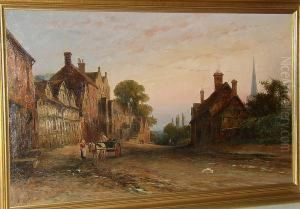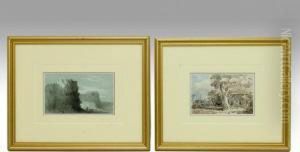Henry Martin Pope Paintings
Henry Martin Pope was a British painter known for his landscape and portrait works. Born on February 14, 1844, in London, Pope received his artistic training at Heatherley's School of Fine Art and later at the Royal Academy Schools. His early work was influenced by the Pre-Raphaelite Brotherhood, a group of English painters, poets, and critics, founded in 1848 by William Holman Hunt, John Everett Millais, and Dante Gabriel Rossetti. The Pre-Raphaelites were known for their highly detailed, vividly colored paintings and their emphasis on realism.
During his career, Pope became associated with the Newlyn School, an art colony located in Cornwall, which was known for its naturalistic and en plein air painting. This movement was part of a larger trend among artists who sought to capture the effects of natural light and atmosphere in their work, often depicting rural or coastal scenes. Pope's paintings often featured the Cornish landscape and its inhabitants, reflecting the daily life and work of the local community.
Despite not achieving widespread fame, Pope was respected among his peers and participated in various exhibitions. He exhibited at the Royal Academy and the Royal Society of British Artists, among other venues. His work was characterized by its rich coloration and attention to detail, which earned him a modest following during his lifetime.
Later in life, Pope was known to have turned to spiritualism and produced a series of paintings reflecting his interest in the supernatural. These works were a departure from his earlier naturalistic style and featured symbolic and mystical elements.
Henry Martin Pope passed away on April 23, 1939, at the age of 95. His contributions to the British art scene of the late 19th and early 20th centuries are recognized in the context of the broader movements of the time, and his paintings are held in several collections in the UK, including in public galleries and museums.











